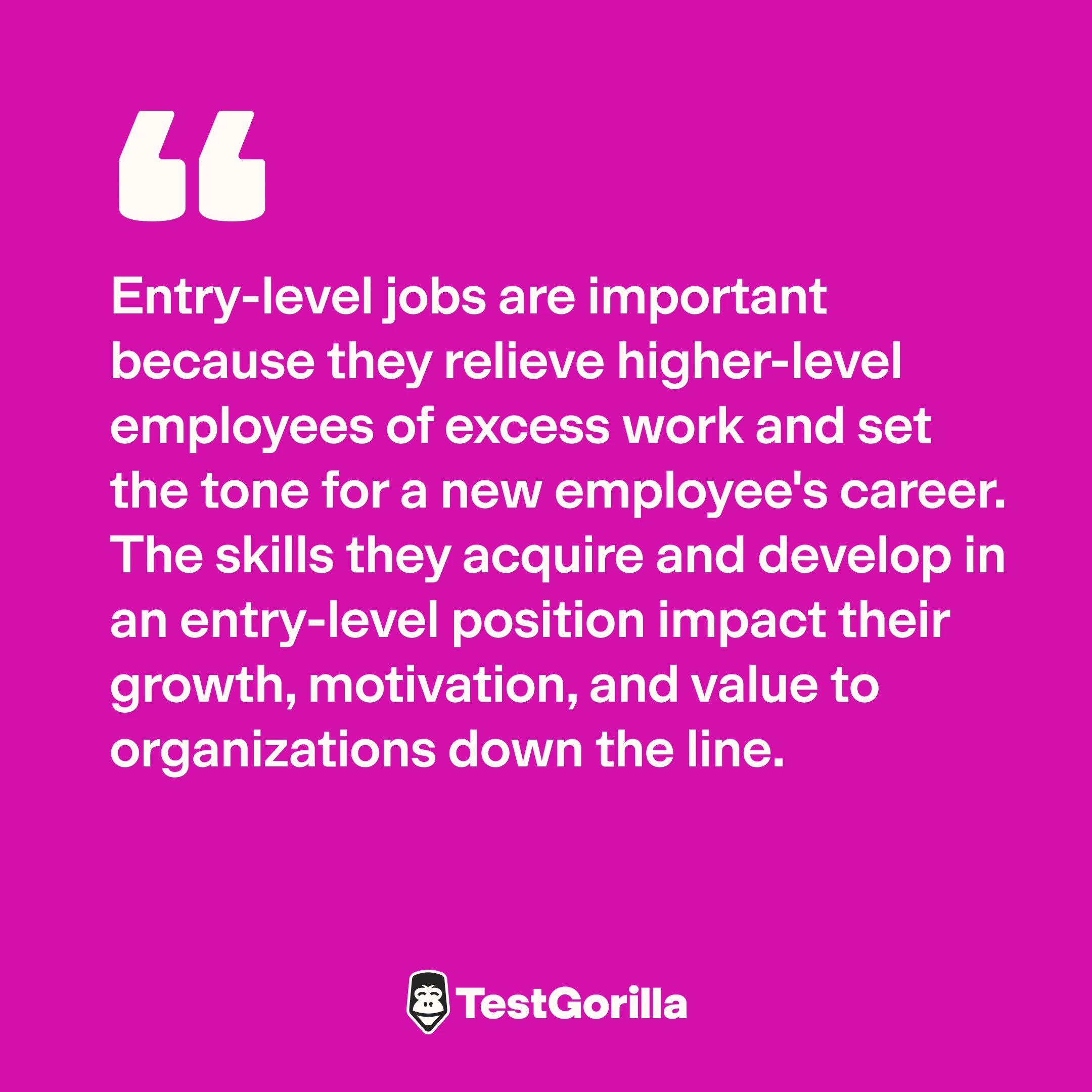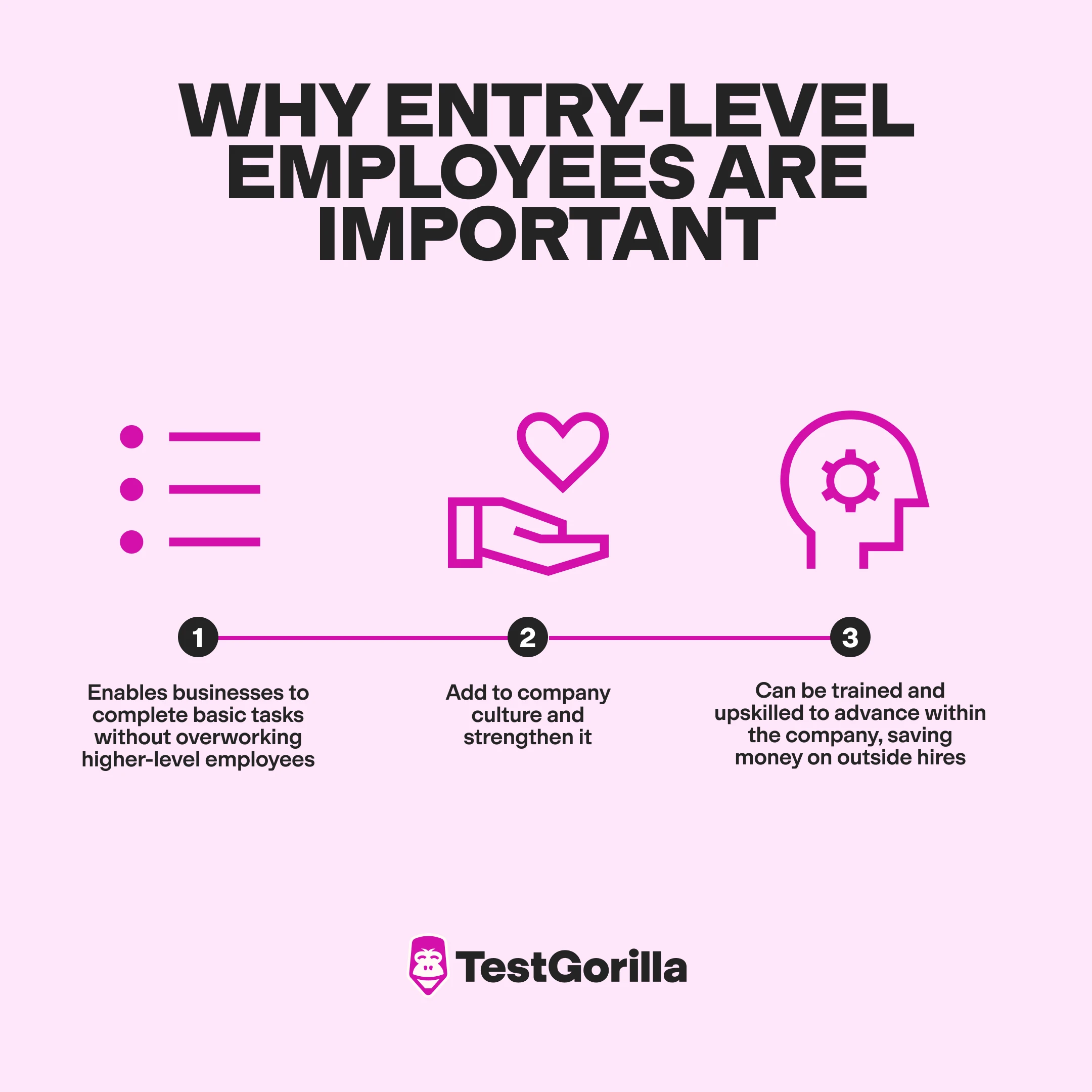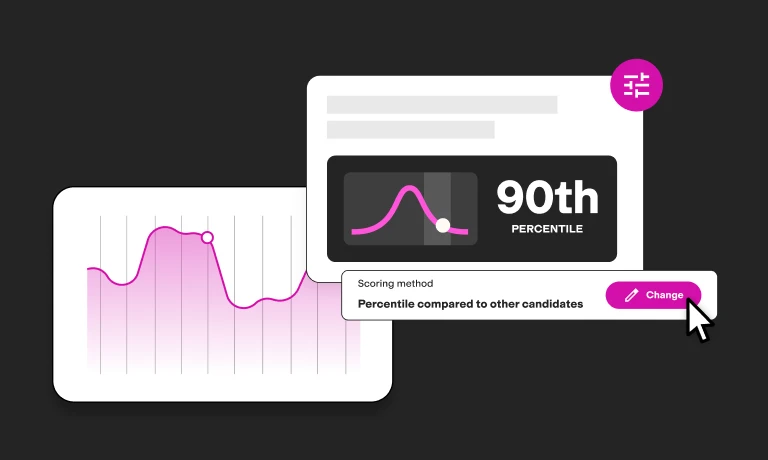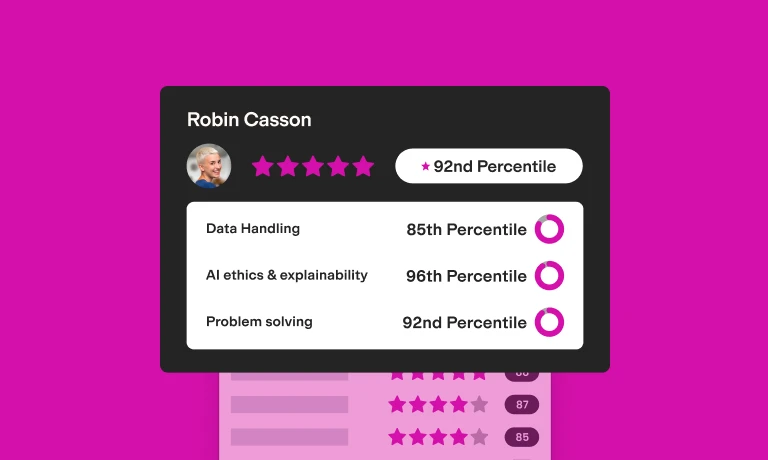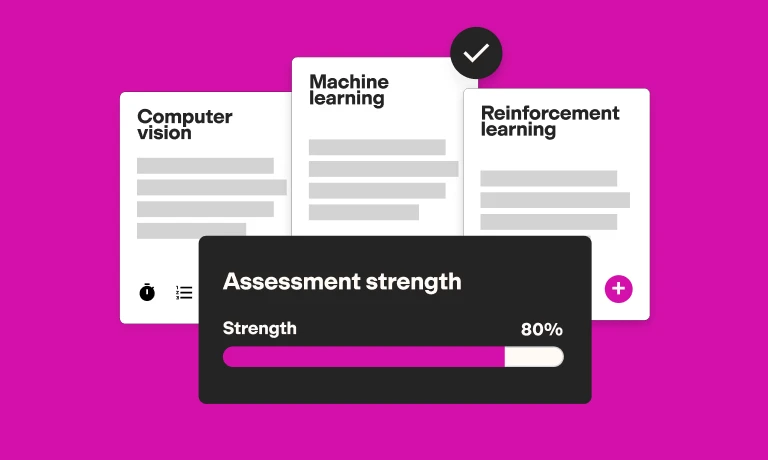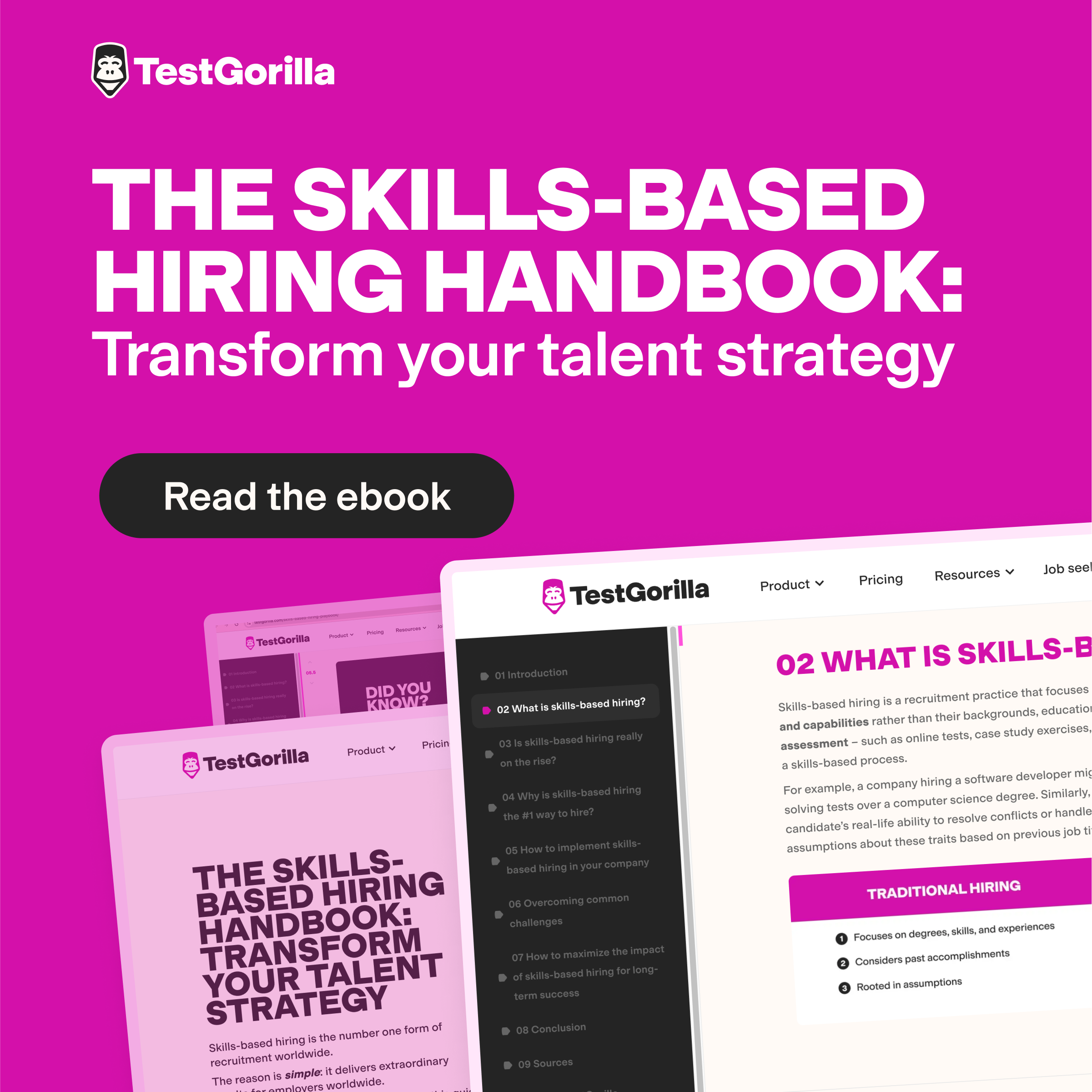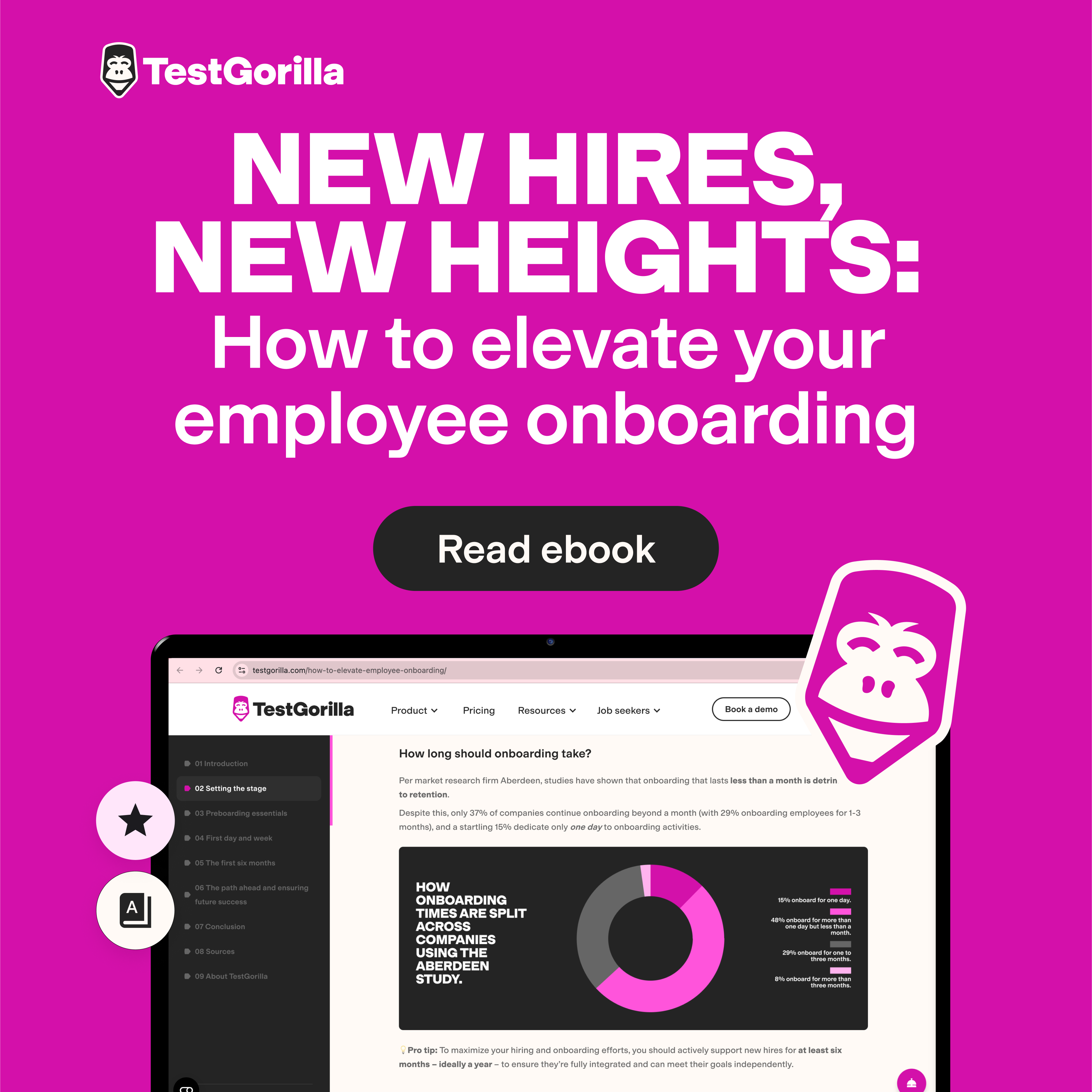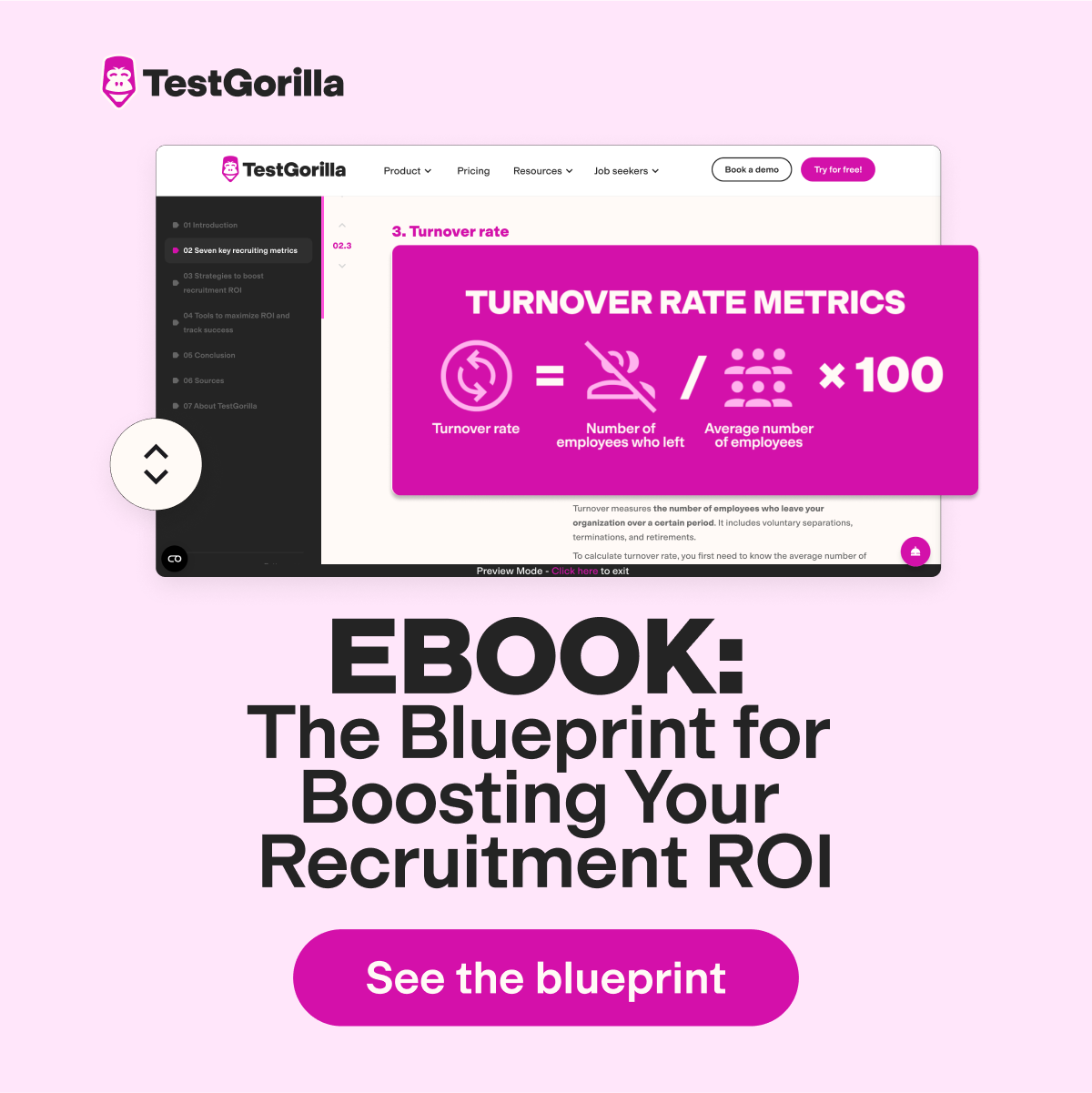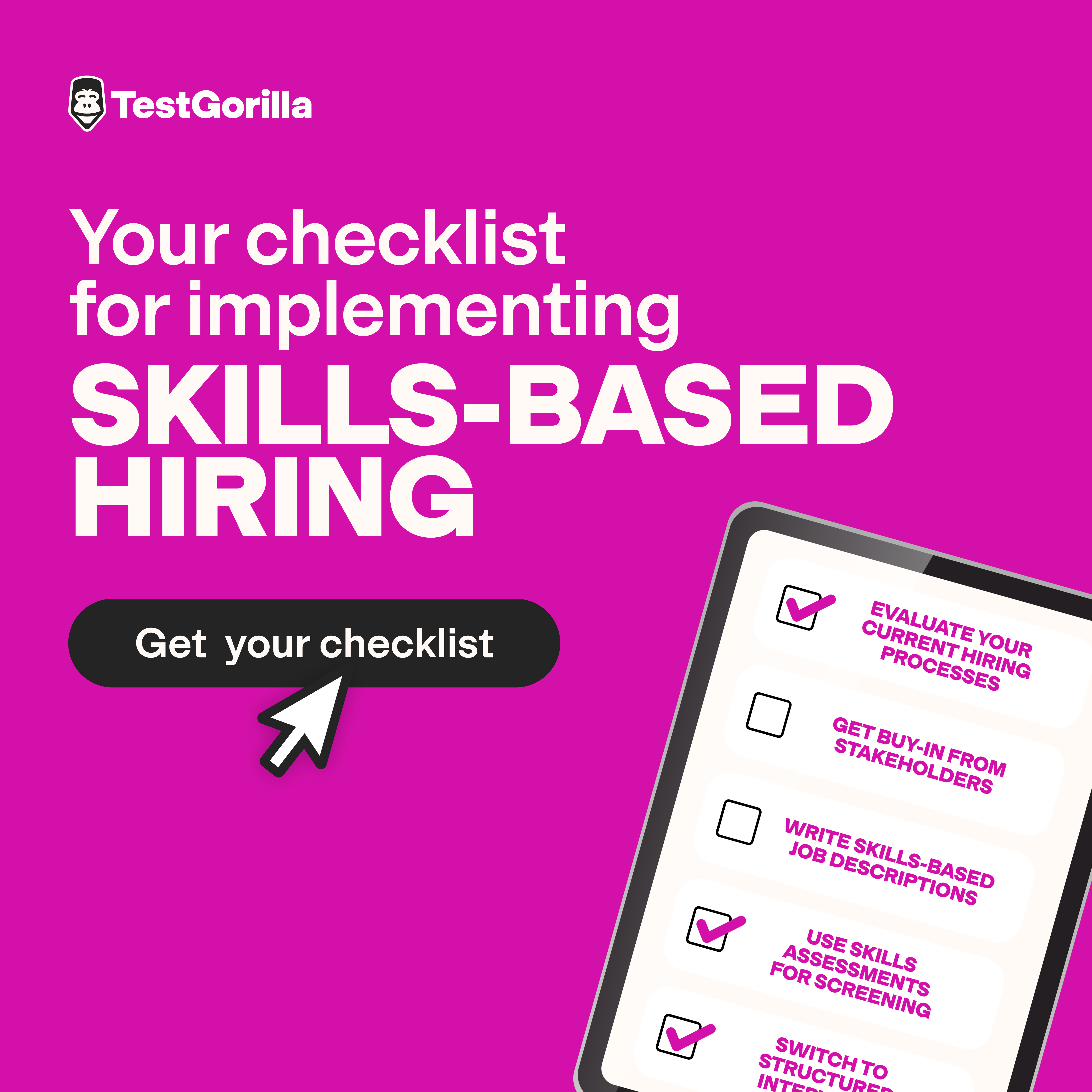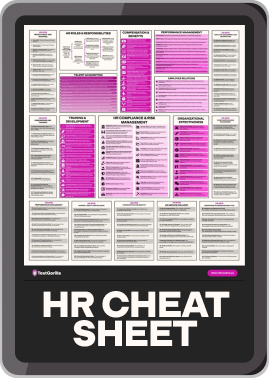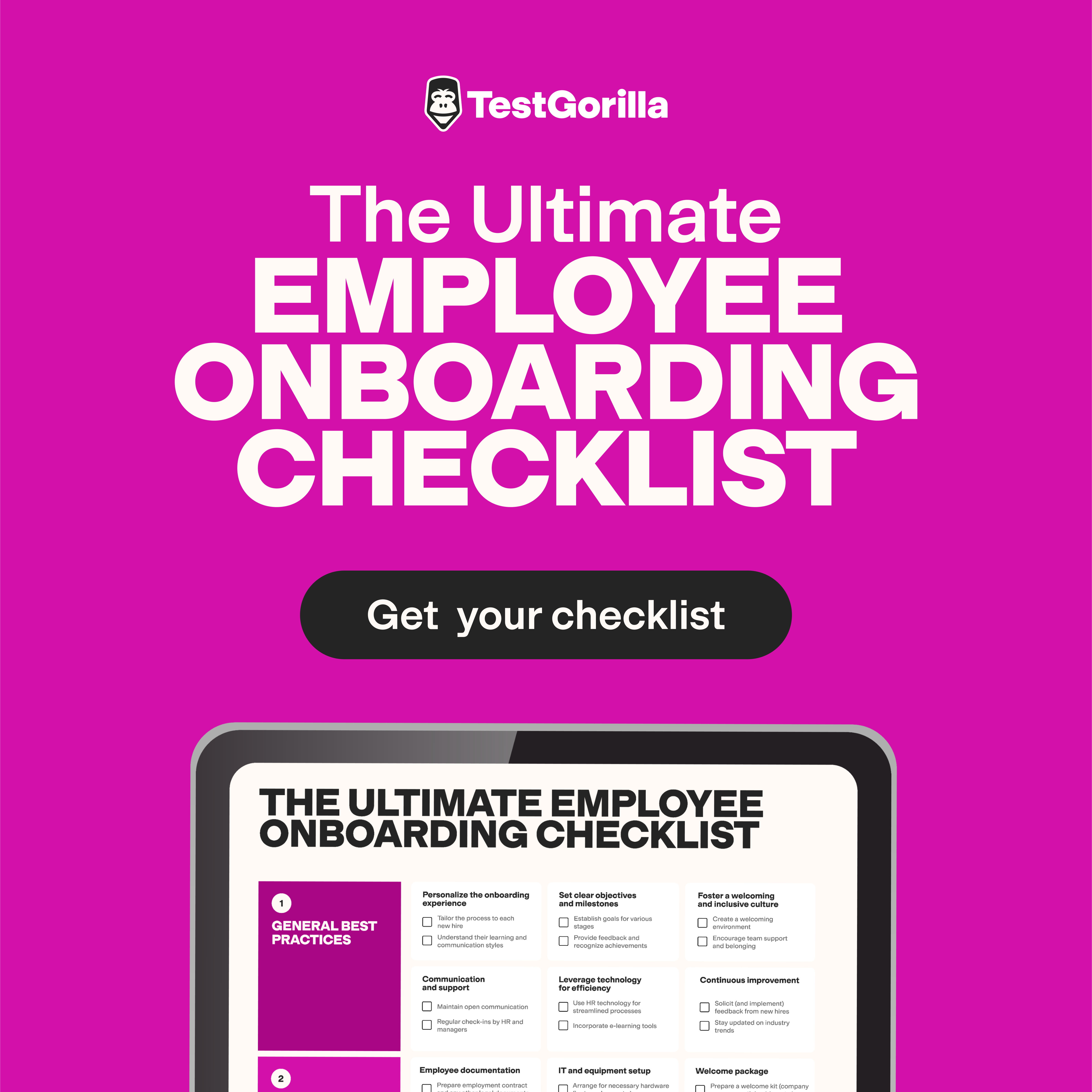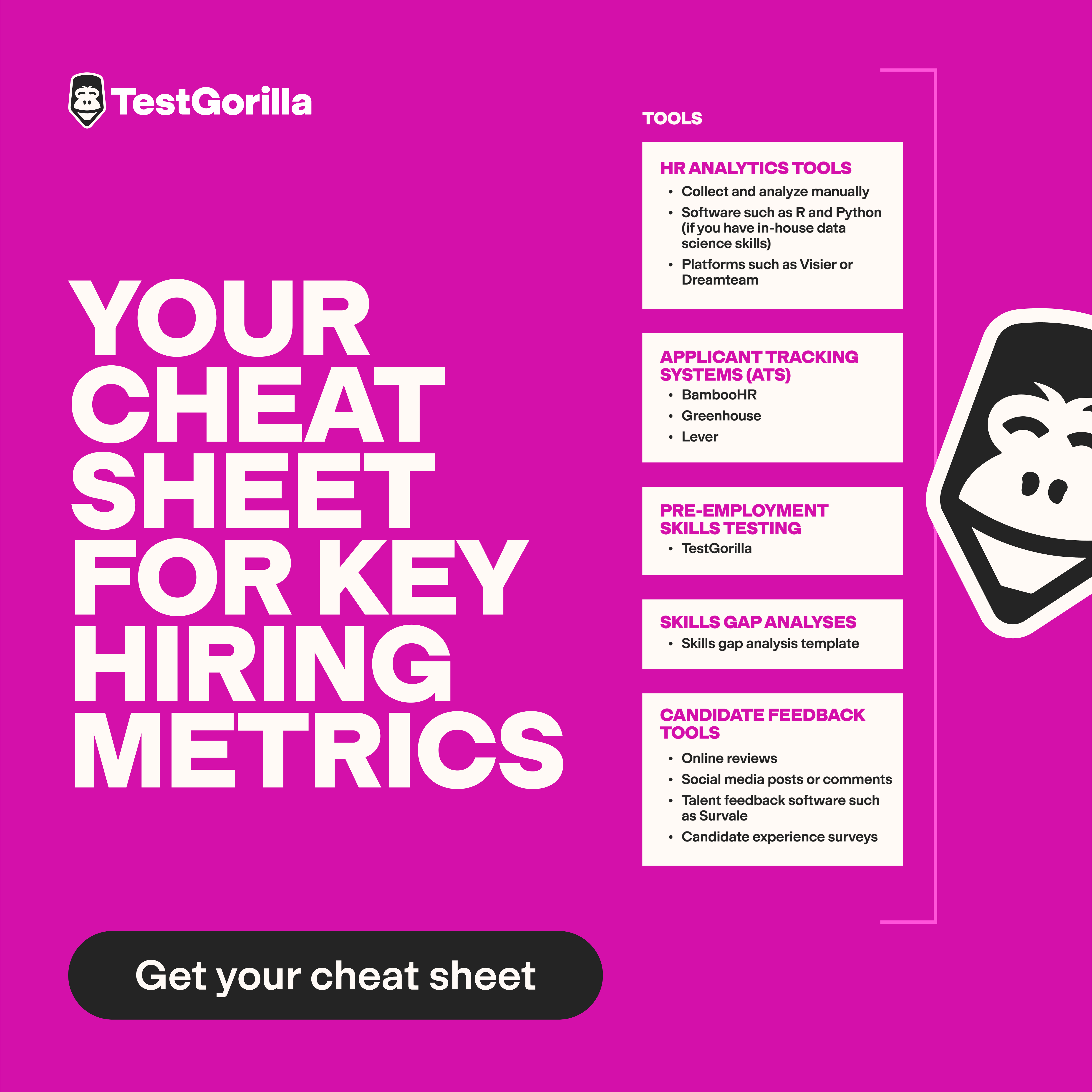How skills-based hiring is transforming entry-level hiring
Entry-level jobs are historically difficult to fill, with 41% of recruiters reporting that they are the hardest positions to hire for.[1]
Although many employers blame entry-level talent shortages, the real culprit is traditional hiring methods that aren’t optimized to locate and retain entry-level talent. Outdated practices like cover letters, resumes, and inflating the worth of degrees disregard workers who may have little to no experience but have the skills to succeed.
The result is a hiring catch-22: Candidates need experience to get a job, but they need a job to get experience.
This isn’t just a nightmare for job-seekers. It severely limits an employer's talent pool, leading them to miss out on diverse candidates with fresh perspectives.
Skills-based hiring levels the playing field by opening up entry-level positions to any skilled candidate, regardless of their background. Read on to discover how candidates and employers alike can benefit from skills-based entry-level hiring.
What is entry-level hiring?
Entry-level jobs are jobs that act as onramps to a career in a particular industry, where employees are trained on the job and learn as they go.
These jobs typically require little to no experience. In terms of organizational hierarchy, entry-level positions are the lowest on the ladder – but as we’ll see, they are incredibly valuable and important to businesses.
Entry-level hiring is the practice of hiring for such entry-level jobs.
An entry-level hire is an employee who's recently been hired into such an entry-level job.
Entry-level job-seekers tend to be recent high school or college graduates, or workers looking to change careers or industries
A social media manager, for example, can be an entry-level position because it requires very little formal education or job experience, but does require certain soft and hard skills.
Why are entry-level jobs important?
Every business has basic tasks that do not require a wealth of knowledge and experience to complete. But they still need to get done. This is exactly what entry-level jobs are about: doing the everyday work that's needed to keep the business up and running.
Entry-level jobs are important because they relieve higher-level employees of excess work and set the tone for a new employee’s career. The skills they acquire and develop in an entry-level position impact their growth, motivation, and value to organizations down the line.
Why are entry-level employees important?
Entry-level roles give organizations the opportunity to mold employees by encouraging them to develop the specific skills that are most valuable to their business.
Entry-level employees:
Enable businesses to complete basic tasks without overworking higher-level employees
Can be trained and upskilled to advance within the company, saving money on outside hires
Add to company culture and strengthen it
4 problems with entry-level hiring
Traditional hiring practices are turning off talented entry-level workers. In September 2021, 450,000 entry-level workers reported being discouraged in the labor market. They were ready and willing to work but dropped out of the job market because they lost hope that any jobs existed.
Companies cannot afford to turn off that many potentially skilled employees. It’s the employer’s job to communicate entry-level job openings and provide a positive outlook to an often underappreciated workforce.
Let's take a look at what traditional entry-level hiring tends to look like, and why it's a turn-off for so many entry-level job seekers..
1. Too much emphasis on experience
Traditional hiring practices tend to put an emphasis on experience. This becomes a problem when you're hiring for entry-level roles, where most jobseekers are in a position where they don't have much experience yet.
A 2017 study found that nearly three-quarters of listings for entry-level software jobs require three or more years of experience.[2] Labeling these jobs as “entry-level” is paradoxical because they require experience to perform in the role that is supposed to provide that experience. What's a candidate to do?
2. Degree inflation
Traditional hiring practices that rely on resumes and degree requirements aren't well suited for entry-level hiring. Employers who use traditional hiring practices are inflating the worth of degrees and work experience because they believe it gets them better hires faster. Unfortunately, the evidence suggests the opposite.
In reality, a college education does not guarantee a candidate is prepared for an entry-level job, and research proves that resumes are one of the worst predictors of job performance.[3]
3. Internships are the new entry-level
According to Alan Seals, an associate professor of economics at Auburn University, many entry-level roles have been replaced by internships.
Yes, companies save money in the short term by handing off work to interns instead of using junior employees. But hiring more interns means eliminating more entry-level positions, which shrinks the talent pool and widens the diversity gap.
In fact, many internships require previous internship experience to evenqualify, excluding talent who could not afford to participate in unpaid internship programs. These roles are often filled through university networks, which further excludes communities that cannot afford or opt out of higher education.
Seals’ research also shows that traditional hiring practices for internships are specifically prone to racial bias, with employers being less likely to respond to candidates with “Black-sounding names,” for example.
4. Automation is replacing entry-level workers
Automation isn’t simply good or bad. The role it plays within the labor market, a company’s financial growth, and an employee’s success is interconnected and complex.
What is clear is that automation is replacing entry-level jobs across industries like manufacturing and warehouses. It’s also replacing some traditional white-collar job responsibilities, like basic clerical and administrative work. But what does this have to do with hiring?
Companies that rely too heavily on automation to replace entry-level jobs are eliminating raw talent from the foundation of their workforce.
Gutting your talent pool to this extent has several consequences for employers:
It becomes harder for candidates with growth potential to enter the workforce and receive valuable training and upskilling.
It removes soft skills, creativity, and ingenuity, making companies less competitive as machines cannot replicate these skills.
Companies pay more money to hire mid-level employees who have been trained and upskilled somewhere else.
5. Small talent pools
Shrinking the talent pool with archaic requirements, internships, and automation increases bias and eliminates raw talent from the workforce.
But how does that impact a company’s bottom line?
Shrinking the talent pool has these negative impacts:
Excludes talented candidates because they do not meet degree or experience requirements.
Hiring a less-skilled candidate that does meet these requirements increases bias and discrimination.
Constructing a culturally homogenous workforce has proven to damage innovation and lead to groupthink, which stunts productivity and profitability. To combat this, employers waste time and money hiring and training replacements who may not have anything new to offer.
All these points lead to costs sunk on training and increased hiring times.
According to a study by SKYNOVA, the number one source of job search frustration for entry-level job seekers is unreasonable experience requirements.
That frustration leads job-seekers to overstate their background and job experience to get a response from hiring managers.
Shrinking the talent pool can actually lead to a bad hire because nearly half of entry-level job-seekers are likely to exaggerate their:
Interpersonal skills
Previous work experience
Achievements
The cost of a bad hire is more than just replacing a candidate who can’t do the work. A bad hire can negatively impact team performance, damage morale, disrupt workflows, and weaken your brand. Recent research also shows that employers are losing confidence in entry-level talent pipelines meeting their hiring needs.
The best insights on HR and recruitment, delivered to your inbox.
Biweekly updates. No spam. Unsubscribe any time.
3 reasons to take a skills-based approach to entry-level hiring
A skills-based hiring approach implements pre-employment assessments, structured interviews, and upskilling opportunities to find and train entry-level talent without relying on bias-prone internship programs or inflated degree requirements.
1. Prioritize skills over education and internships
To be clear, skills-based hiring does not exclude candidates who have completed internships; rather, it does not rely on internships to determine a candidate’s skills or predict their job success.
Skills-based hiring relies on data-backed performance metrics to determine whether a candidate is right for an entry-level role, regardless of their internship experience.
In other words, hiring managers can identify real capability and a candidate’s potential.
A candidate may have zero experience in advertising, for example, but has a great sense of humor. They’re quick-witted, good with wordplay, and concise in their communication.
All of these traits are valuable to any advertising campaign. This candidate knows very little about how the organization works but is hired to an entry-level sales position because of their transferable soft skills and potential to learn.
Skills tests and behavioral interviews reveal which entry-level candidates have the potential to grow and be shaped into the workforce employers actually need, instead of inflating degrees and internship experience.
2. Identify soft skills
According to a report from the U.S. Government Accountability Office, workforce stakeholders suggested that training programs for new employees should focus on in-demand soft skills for high-growth positions that are less likely to be automated.
In fact, this resonates with our own data: In our annual State of Skills-Based Hiring report, we discovered that 89% of employers think that soft skills are more important now than they were 12 months ago.
The State of Skills-Based Hiring 2025
Read TestGorilla's annual report to discover why 85% of companies are choosing skills-based hiring s in 2025.
This goes some way towards solving the automation dilemma. Skills-based hiring offers skills training and development opportunities that build on workers’ existing skills and increase productivity where automation can’t.
Instead of being let go, the new hire can be upskilled to maintain and improve the machine’s efficiency and train others on how to operate it safely. Employers can even use skills-based tests to measure skills development – with a Working with Generative AI test, for example.
3. Widen the talent pool and boost diversity
Skills-based hiring creates a wider, more diverse talent pool of entry-level talent by testing hard and soft skills with role-specific tests, personality assessments, and structured interviews that remove bias and assess a candidate’s actual skills.
The State of Skills-Based Hiring 2024 found that 90% of employers saw an increase in workplace diversity when using skills-based hiring. Why does that figure matter?
Hiring diverse candidates does more than fill a quota. Diversity in hiring has proven to make companies more profitable by:
Expanding your talent pool: Diverse candidates challenge the status quo to increase innovation and profitability
Increasing customer satisfaction: Diverse employees reflect the end user of a product or service, and have the potential to reach and satisfy more demographics
Increasing investment: With ESG requirements on the rise, skills-based hiring shows investors that your organization values diversity and innovation to expand your business
All of these skills-based hiring benefits directly impact entry-level positions because every candidate needs to start somewhere.
7 steps to optimizing entry-level hiring
Let’s take a look at a step-by-step example of how to adopt skills-based hiring practices and optimize entry-level hiring.
Step 1: What’s the role?
Running your therapy practice requires a blend of technical and interpersonal skills.
In addition to seeing clients, you need to track expenses like paying therapists, renting an office space, and paying for advertising on therapy websites. You also need to negotiate reimbursements with various insurance companies and keep track of clients’ out-of-pocket payments.
It becomes clear that you need an entry-level administrative assistant who can take that work off your plate and complete the following tasks:
Scheduling appointments
Checking patients’ insurance benefits
Generating and submitting claims to insurance
Generating invoices for patient copays
Handle incoming calls/emails for new patients
Step 2: What’s the skills gap?
Although you have the skills to perform all of these tasks, you are too busy focusing on high-level clinical responsibilities and employee management.
Your current employee is interning to be a therapist and is more suited to a therapeutic environment than a clerical one.
So, how do you find the right replacement? Start with a skills-gap analysis.
This HR method is used to measure the skills needed for a particular job against the skills of current employees.
With a skills-gap analysis, you can:
Skills-gap analysis effects | Benefits |
Adapt your training efforts to the employee’s individual needs | Cater your training to exactly what the candidate needs to learn as well as what the role requires |
Create a comprehensive talent strategy | Hone your talent strategy to each employee so they can succeed in their individual role |
Design a recruitment strategy tailored to your needs | Streamline your recruitment efforts and drive down turnover rates |
Your skills-gap analysis reveals that the new administrative assistant needs the following soft skills:
Communication skills for interacting with patients and insurance providers
Problem-solving skills for dealing with unexpected scheduling or payment conflicts
Time-management skills for scheduling appointments and calls
Basic math skills for handling and processing payments and making invoices
Step 3: Use skills-based job descriptions
Now that you know the position to hire for and the skills needed for the job, it’s time to work on your job posting.
A skills-based hiring approach means skills should take center stage in your job description. Since this is an entry-level position, make sure to emphasize soft skills.
Why? Because you can easily train your new admin assistant on the more technical, hard-skill processes your practice relies on, such as:
How to list all active patients in a Google Drive database
How to fill out an insurance claim
How to mail an insurance claim
How to check a patient’s benefits
How to make an invoice
Instead of requiring your candidates to have these hard skills, which greatly limits your talent pool, advertise your willingness to train candidates in these processes.
Perhaps just as important as making an effective job posting is knowing where to post it. As well as job boards, you can use social media sites such as Facebook to source and recruit skilled candidates who are ready to learn.
Step 4: Use pre-employment assessments to test soft skills
Pre-employment assessments identify a candidate’s natural talent in certain areas. A candidate may write some of their strengths on their resume without knowing where they truly excel.
Testing soft skills is crucial for entry-level hiring because, although your entry-level candidates may not yet have many hard, role-specific skills, you can get a sense of their ability to learn and work effectively in a professional environment. Here are some ways to test different soft skills:
Soft skills test | How it works |
Assesses a candidate’s ability to communicate clearly and effectively verbally, in writing, using professional etiquette | |
Determine whether a candidate can manage schedules, make logical decisions, and maintain organizational standards. | |
Assess how well a candidate can prioritize, plan, and execute tasks. |
Step 5: Use structured interviews
In a structured interview, there is no room for personal preference, groupthink, or discrimination because the questions strictly measure skills and behavior.
Structured interviews use pre-established interview questions in a particular order so you can score candidates on their responses. They are more objective than traditional unstructured interviews and prevent any unconscious bias from entering the interview process.
Entry-level positions typically perform straightforward tasks and responsibilities. Structured interviews can pinpoint exactly what is required of an entry-level candidate and ask them questions that reflect the role itself, instead of getting bogged down in free-flowing conversations that don’t focus on skills.
Behavioral interviews are a type of structured interview where employers can evaluate a candidate’s interpersonal skills, personality traits, how they act, their passions, and their motivations.
Let’s say you want to see how an entry-level candidate could improve your billing procedure. You could ask: Have you ever implemented an innovative or unique solution to solve a complex problem?
If they provide a compelling and relevant answer, you know they have the skills to improve that procedure. Structured interviews also open up the talent pool to more diverse candidates by mitigating bias.
Step 6: Expand this skills-based hiring approach to other positions
Congratulations! You have successfully hired your first entry-level administrative assistant with a skills-based hiring approach.
Due to this employee’s positive impact on your business, you find that even their role is being overwhelmed with all of your new patients. With skills-based hiring, you have options:
You can upskill and promote this candidate to a more complex role within your practice based on the skills gaps you have identified
You can keep them in their role while hiring more employees to assist in their responsibilities
Just remember, communication in hiring is key. Entry-level workers are human beings with feelings and concerns. Expanding your skills-based hiring approach to other roles should consider the unique place that entry-level workers occupy in the labor market.
Step 7: Make development a priority
Skills-based hiring and employee development go hand in hand. Nearly half of American workers say they would switch to a different job if they were offered skills training opportunities.
Emphasizing development opportunities in your job postings and throughout the hiring process has several benefits:
It makes your brand more attractive: If you gain a reputation for investing in your employees, more applicants will choose your business to launch their careers.
It engages and retains top employees: Nearly 16% of employees report being disengaged from their workplace. Development initiatives can reinvigorate employees by signaling their growth and job success are organizational priorities.
It shows that you are a values-driven organization: Investing in employee development gives your entry-level workers proof that you care about more than just your bottom line. They feel more connected to your company’s purpose, driving innovation and productivity.
Learning and development are crucial to hiring and retaining employees, and also increasing employee potential and performance.
For example, if you notice that one of your administrative assistants is showing an interest in the clinical side of marriage and family therapy, you can encourage them to pursue a license to practice counseling.
With a professional development plan in place that tracks their clerical and clinical goals, you are on track to promote this assistant to a counselor role, greatly expanding your client base and your brand.
This kind of professional development motivates your employees to consistently learn and grow, encourages individual self-actualization, and creates a value-based culture where employees experiment and learn skills for higher-level roles.
Fill your entry-level job openings with skills-based hiring
Screening entry-level applicants for resumes, degrees, and internship experience shrinks the talent pool and wastes time searching for candidates that only look good on paper.
Skills-based hiring benefits both employers and job-seekers by filling entry-level positions with skilled workers who have demonstrated their potential via an assessment.
Emphasizing that development is crucial to reaping all of the rewards that skills-based hiring brings, such as lower turnover, increased job satisfaction, and long-term innovation. And that’s only the beginning. Learn more about the power of skills-based hiring with these 10 stories.
Sources
Thakkar, Rinku. (July 16, 2022). “Top 100 Hiring Statistics for 2022”. LinkedIn. Retrieved April 24, 2023. https://www.linkedin.com/pulse/top-100-hiring-statistics-2022-rinku-thakkar/
Anders, George. (August 18, 2021). “Hiring’s new red line: why newcomers can’t land 35% of ‘entry level’ jobs”. LinkedIn. Retrieved April 11, 2023. https://www.linkedin.com/pulse/hirings-new-red-line-why-newcomers-cant-land-35-jobs-george-anders/
Schmidt, Frank; Oh, In-Sue; Shaffer, Jonathan. (October 2016). “The Validity and Utility of Selection Methods in Personnel Psychology: Practical and Theoretical Implications of 100 Years of Research Findings”. ResearchGate. Retrieved April 24, 2023. https://home.ubalt.edu/tmitch/645/session%204/Schmidt%20&%20Oh%20validity%20and%20util%20100%20yrs%20of%20research%20Wk%20PPR%202016.pdf
You've scrolled this far
Why not try TestGorilla for free, and see what happens when you put skills first.


